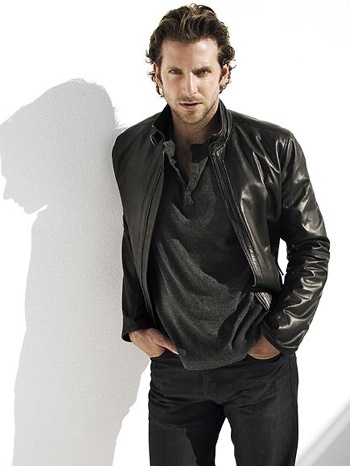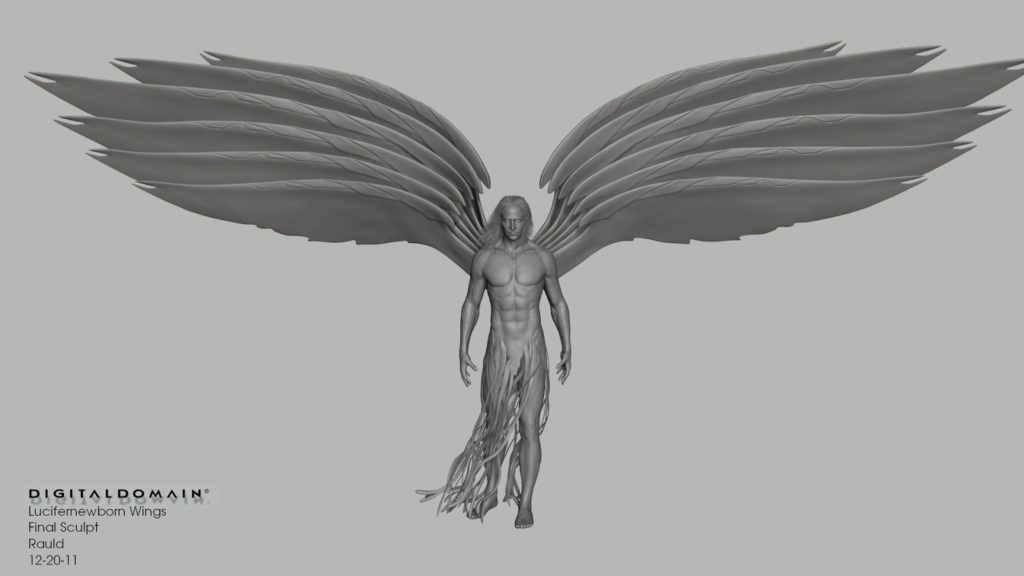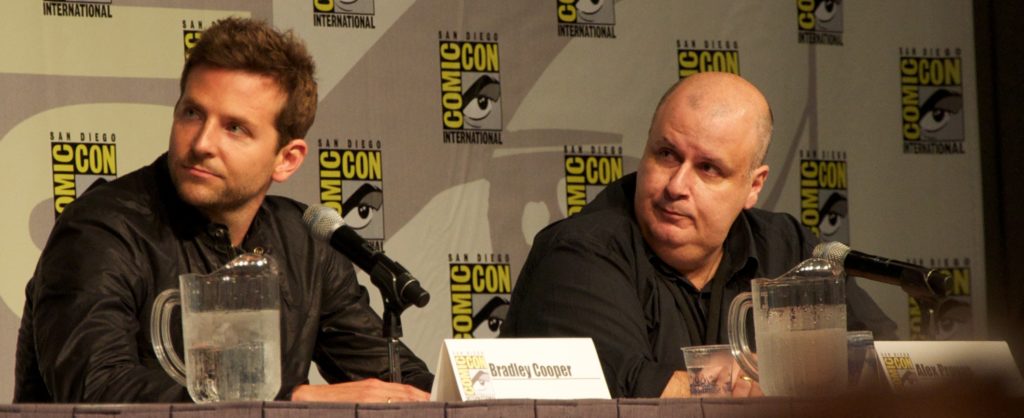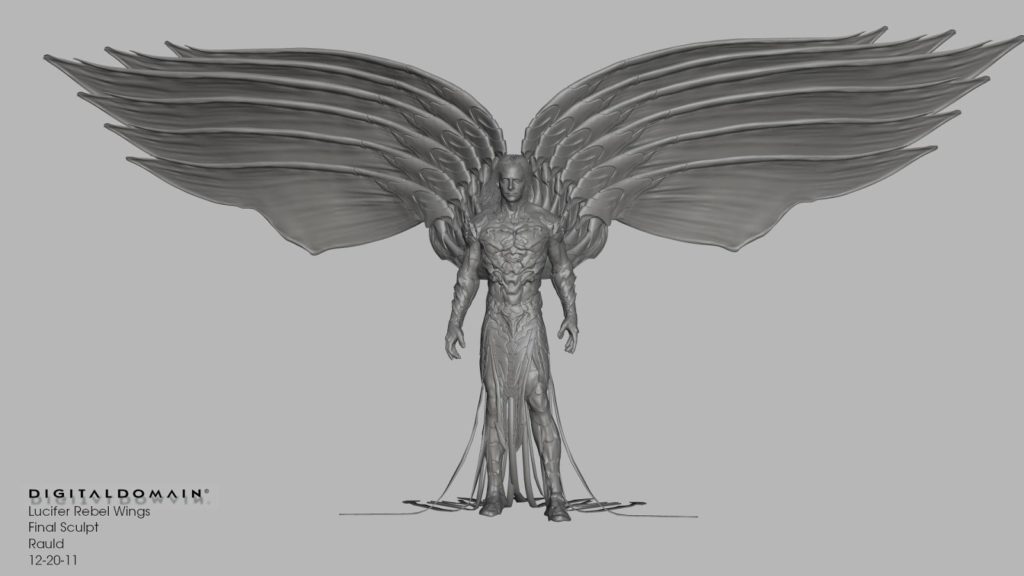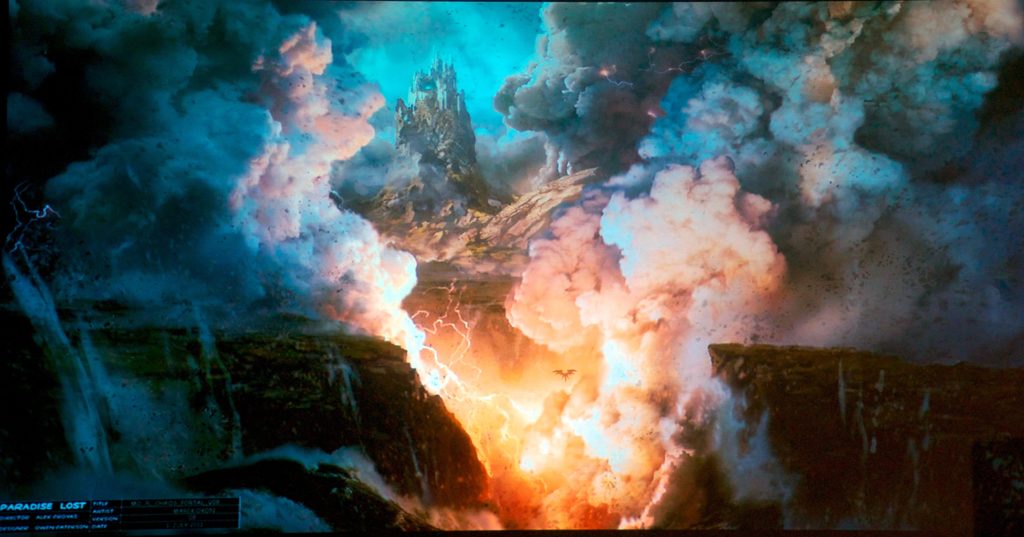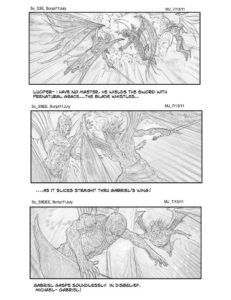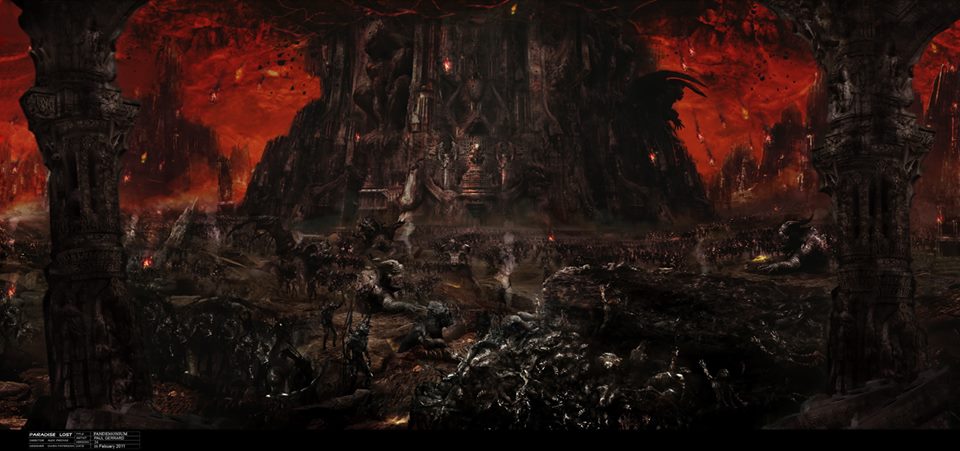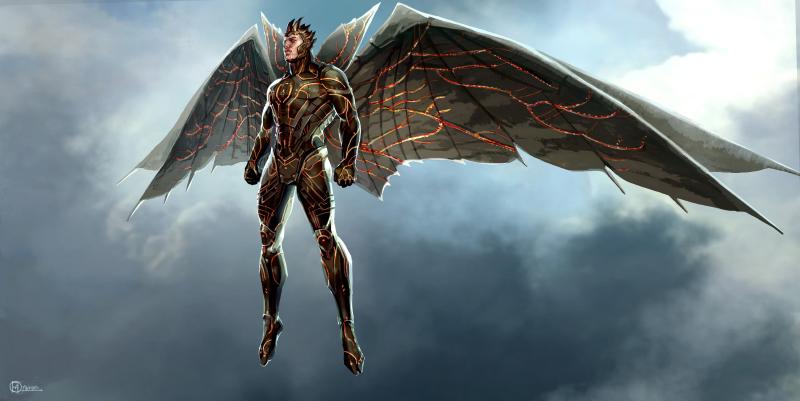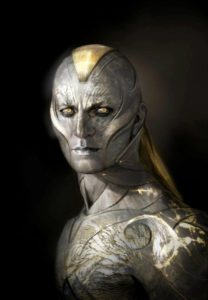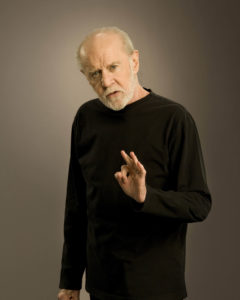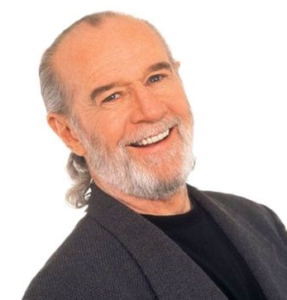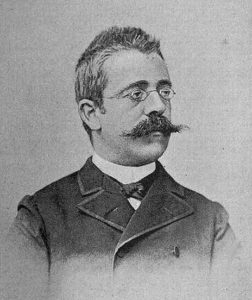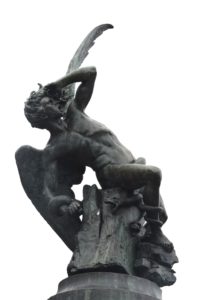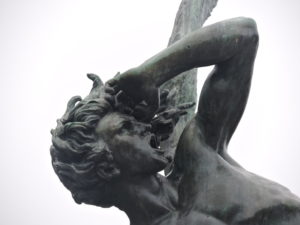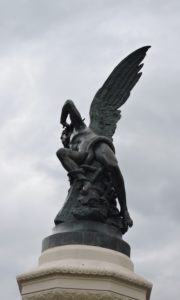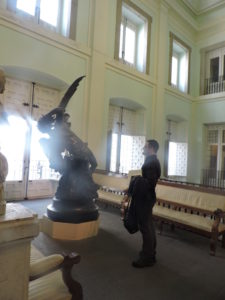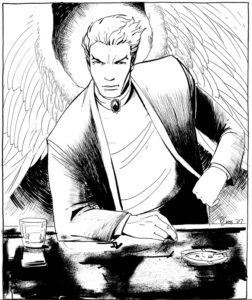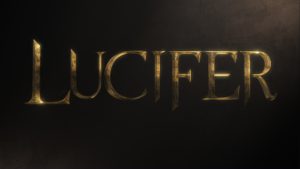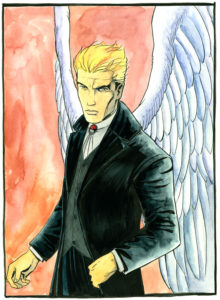Among the many peculiar things about 2016’s heated election season in the U.S., perhaps the most interesting aspect of the ensuing chaos is the reoccurring invocation of Lucifer by the political Right, which is a distant echo of the nineteenth-century phenomenon of Romantic Satanism. Romantic icons Lord Byron and Percy Bysshe Shelley were demonized as heads of a “Satanic School” by first-generation Romantic radical turned reactionary Robert Southey, whose co-option by the political establishment had been consecrated in his laureateship. In his elegy for King George III, A Vision of Judgement (1821), Southey demonized the wayward second-generation Romantics Byron and Shelley for following Milton’s fallen archangel in having “rebelled against the holiest ordinances of human society,” Southey identifying an intense diabolism in their works, “characterised by a Satanic spirit of pride and audacious impiety…”1 Southey’s Satanic School diatribe against Byron and Shelley was in part a call for the English government to censor the irreverent writings of these Satanized poets and their circle, which the Poet Laureate believed threatened the social order. “Men of diseased hearts and depraved imaginations,” thundered Southey, “labour to make others as miserable as themselves, by infecting them with a moral virus that eats into the soul!”2 Nearly two centuries later, on the other side of the Atlantic, the political landscape is witnessing a return to this reactionary Satanizing—this time at the presidential level.
The Christian tradition has a long history of demonizing undesirables, which began as early as the New Testament with the demonization of the Jews, Jesus himself casting the Pharisees—who not only disbelieve the messianic Jesus but seek to kill him—as sons of Satan: “If God were your Father, ye would love me: for I proceeded forth and came from God.…Ye are of your father the devil, and the lusts of your father ye will do” (John 8:42–44). Christian Scripture is unequivocal with regards to the Satanic status of the Jews: those who “say they are Jews, and are not”—i.e., those Jews who fail to accept Jesus as the Son of God and their savior—are said to belong to “the synagogue of Satan” (Revelation 2:9, 3:9). Indicting the Jews as “Christ-killers,” who had invited their own doom when boasting of the condemned Christ, “His blood be on us, and on our children” (Matthew 27:25), helped foster anti-Semitism throughout the history of Christendom,3 and in fact it wasn’t until the Second Vatican Council (1962–1965) that the charge of the cosmic crime of deicide was officially dropped. The Jews were originally demonized because Christians (erstwhile Jews) believed they’d gone astray from “the good shepherd” (John 10:11, 14) while believing themselves still part of the flock (they “say they are Jews, and are not”). This remained the inspiration for demonization in the Christian Church, fellow Christians with unorthodox views accused of heresy (Greek for “choice”) and persecuted accordingly.
Former Speaker of the House John Boehner, in an April 28, 2016 interview hosted by Stanford University, followed the Christian tradition of marginalizing one of his own by way of demonization, describing then struggling Republican presidential candidate Ted Cruz as “Lucifer in the flesh.” Boehner’s demonizing dismissal of Cruz was not based upon theological or ideological differences, but a vehement dislike of the man: “I have Democrat friends and Republican friends. I get along with almost everyone, but I have never worked with a more miserable son of a bitch in my life.” Things only got more colorful when the media sought actual Satanists to weigh in on the matter, co-founder of The Satanic Temple Lucien Greaves immediately responding:
Boehner’s comment is illustrative of how well past time it is to adjust our mythologies to reflect our realities. Cruz’s failures of reason, compassion, decency, and humanity are products of his Christian pandering, if not an actual Christian faith. It grows tedious when pedophile priests and loathsome politicians are conveniently dismissed as Satanic, even as they spew biblical verse and prostrate themselves before the cross, recruiting the Christian faithful. Satanists will have nothing to do with any of them.
The Satanic Temple is known for its political—and politically progressive—slant on Satanism, but the Church of Satan, which is normally devoid of official political positions, was also asked to respond to Cruz as “Lucifer in the flesh.” On April 30, 2016, incidentally the 50th anniversary of the Church of Satan’s founding, the organization’s High Priest, Peter H. Gilmore, took exception to the comparison of Cruz to Lucifer:
Having a conservative Christian likened to Lucifer — one who opposes equal rights for same sex couples and promotes the ability to deny services to any with different values — we Satanists see as besmirching the positive, heroic aspects of that character as portrayed by Milton in his epic Paradise Lost.
Boehner’s blanket dismissal of Cruz as Lucifer incarnate was, again, more of a personal insult than an ideological condemnation. Conservatives have reserved full-fledged demonization for their political counterparts on the Left. In his speech at the Republican National Convention on July 19, 2016, former Republican presidential candidate Ben Carson—a retired neurosurgeon who apparently considers Darwin’s theory of evolution a deception of Satan—explicitly aligned Democratic rival Hillary Clinton with Lucifer:
One of the things that I have learned about Hillary Clinton is that one of her heroes, her mentors, was Saul Alinsky. Her senior thesis was about Saul Alinsky. This was someone that she greatly admired and that affected all of her philosophies subsequently.…He wrote a book called Rules for Radicals. On the dedication page, it acknowledges Lucifer, the original radical who gained his own kingdom. Now think about that. This is a nation where our founding document, the Declaration of Independence, talks about certain inalienable rights that come from our Creator. This is a nation where our Pledge of Allegiance says we are “one Nation under God.” This is a nation where every coin in our pocket and every bill in our wallet says “In God We Trust.” So are we willing to elect someone as president who has as their role model somebody who acknowledges Lucifer? Think about that.
Carson here misrepresents the Declaration of Independence (the reference he cites is to the non-interventionist designer God of Deism, hence “Creator” and “Nature’s God” as opposed to “Jehovah” or “Jesus”) and is likely ignorant of the phrases “one Nation under God” and “In God We Trust” having been placed in the Pledge of Allegiance and on U.S. currency, respectively, in the 1950s. These are subsidiary issues, however; what screams out from Carson’s speech is the garish reference to Lucifer. Naturally, there can be no more focused demonization of Hillary Clinton than aligning her with none other than Lucifer himself, but Carson was merely bringing to new heights a topic/tactic familiar in right-wing circles.
Saul D. Alinsky, though now an extremely marginal historical figure, has been viewed as the archetypal community organizer. His Rules for Radicals: A Pragmatic Primer for Realistic Radicals, published a year before his death in 1972, was designed as a guide to challenging and ultimately overcoming the sociopolitical establishment, the crux of which is infiltrating the system in order to change it from within. “The Prince was written by Machiavelli for the Haves on how to hold power,” Alinsky explains, whereas “Rules for Radicals is written for the Have-Nots on how to take it away.”4 Contrary to what Carson and his ilk claim, the book is not dedicated to Lucifer but “To Irene,” Alinsky’s wife. Flipping the page, you then find the Lucifer reference, which follows two quotations—one from Rabbi Hillel and the other from Thomas Paine—and Alinsky describes Lucifer as “the very first radical…who rebelled against the establishment,” and he is clearly invoking Lucifer the idealized arch-rebel imagined by the Miltonic-Romantic tradition:
Lest we forget at least an over-the-shoulder acknowledgment to the very first radical: from all our legends, mythology, and history (and who is to know where mythology leaves off and history begins—or which is which), the first radical known to man who rebelled against the establishment and did it so effectively that he at least won his own kingdom—Lucifer.5
Ben Carson is surely ascribing more significance to this cheeky quotation than is appropriate. British-Indian author Salman Rushdie—who, as the target of an Islamic witch hunt ever since the publication of his novel The Satanic Verses in 1988, knows what it feels like to be truly demonized—quite rightly derided Carson for his inability to “recognize irony or humor.” Clearly, as far as Carson is concerned, the mere “over-the-shoulder acknowledgment” of Lucifer is enough to summarily dismiss Alinsky—and, by extension, Hillary Clinton—but other conservatives have gone further, demonizing Alinsky/Clinton by way of aligning his/her political stratagems with the Devil’s. In a June 5, 2014 interview with The Blaze, neocon and Christian apologist Dinesh D’Souza gave the following analysis of Alinsky and his political disciples:
…Alinsky was obviously not a Christian; in fact, he was an atheist. So why would an atheist dedicate a book to Lucifer? I think to discover the answer, you have to pay careful attention to what Lucifer represents in the Western tradition. So I did a close reading of Milton’s Paradise Lost, and you begin to see how Lucifer operates. First of all, Lucifer is a master of organizing resentment, and so is Alinsky. Lucifer is also a master at making G-d [sic] the bad guy. So even though Lucifer rebels against G-d, even though G-d justly expels Lucifer from Heaven, Lucifer goes, “G-d, you’re a tyrant. I don’t have to follow you. I want my own kingdom.” So Lucifer practices, you may say, demonization against G-d. And finally, Lucifer is a liar. He is a master of dishonesty and deceit. Now, Alinsky adopted these Luciferian techniques.…And I think here, we begin to see the Obama and even the Hillary playbook.…: Seeming very respectable, being very self-disciplined, and ultimately pretending to be a friend of the middle class, whose values you are trying to undermine.
Paradise Lost’s Lucifer, the charismatic character Milton brought to life as a celestial insurrectionist who scorns “Knee-tribute” to the King of Heaven as “prostration vile” (V.782) and, despite damnation, pledges himself to forever defying “the Throne and Monarchy of God” (I.42), was extremely appealing to the radicals of Romanticism living in the wake of the American and French Revolutions.6 The Miltonic-Romantic Satan continued to be channeled throughout the nineteenth century by antiestablishment figures, such as the anarchists Pierre-Joseph Proudhon and Mikhail Bakunin.7 Alinsky’s Lucifer reference surely owes much to this tradition, but more than anything else it appears to be a simple satirical aside. D’Souza takes the “over-the-shoulder acknowledgment” of Lucifer and runs riot with it, and what emerges from his intricate demonization of Alinsky, Obama, and Clinton is something that seems straight out of the reactionary assaults on the Romantic Satanists back in the nineteenth century, “close reading of Milton’s Paradise Lost” and all.
While demonizing or Satanizing political rivals appears to be growing increasingly commonplace on the American Right (the Left is inclined to a more modern-day form of demonization by way of employing accusations amounting to secular Satans: fascist, racist, sexist, homophobe, xenophobe, etc.), it is doubtful that anyone within the political landscape will follow the Byronic-Shelleyan precedent in response.
Byron and Shelley had initially been demonized in part because of their combination of licentious lifestyles and radical politics, both spiced up by cultivation of provocative and mischievous diabolical personas. These rebellious poets escalated the matter by responding to their public demonization by styling themselves as Satanic—in the tradition of the heroic Satan out of Milton—to sardonically mock and forcefully challenge the forces of reaction. For example, Byron, who was the central target of Southey’s Satanic School tirade, when preparing his drama Cain (1821)—the poet’s retelling of the biblical story of the first murder, in which Lucifer emerges as a noble opponent of a tyrant God and a Promethean patron of Man—vowed to “give…Mr. Southey – & others of the crew something that shall occupy their dreams!”8 Any such response today is highly unlikely, especially at the level of the presidency. Indeed, in the case of Barack Obama and Hillary Clinton—the first black and potentially the first female presidents, respectively—there are already enough obstacles in their political paths without attempts to disarm reactionary demonization by embracing it. If anything, just as Byron responded to Southey’s Satanic School charge with a countercharge (“If there exists anywhere, excepting in his imagination, such a school, is he not sufficiently armed against it by his own intense vanity?”9), Clinton and her campaign may perhaps turn Ben Carson’s Luciferian demonization back around and liken the egomaniacal Donald Trump to Lucifer, the one who aspired to the Throne of God.
As far as I’m concerned, though it may be interesting and amusing to hear the Devil’s name bandied about in my country’s current election season, comparison of either presidential candidate to Lucifer is quite simply downright insulting—to Lucifer.
Notes
1. Quoted in C. L. Cline, “Byron and Southey: A Suppressed Rejoinder,” Keats-Shelley Journal, Vol. 3 (Winter, 1954), p. 30.↩
2. Ibid.↩
3. See Jeffrey Burton Russell, Lucifer: the Devil in the Middle Ages (Ithaca, NY: Cornell University Press, [1984] 1986), pp. 192–93; Peter Stanford, The Devil: A Biography (New York: Henry Holt and Company, Inc., 1996), pp. 122–27.↩
4. Saul D. Alinsky, Rules for Radicals: A Pragmatic Primer for Realistic Radicals (New York: Vintage Books, [1971] 1972), p. 3.↩
5. Ibid., p. ix.↩
6. See Maximilian Rudwin, The Devil in Legend and Literature (LaSalle, IL: Open Court Publishing Company, [1931] 1959), pp. 263–65, 286–87; Jeffrey Burton Russell, Mephistopheles: the Devil in the Modern World (Ithaca, NY: Cornell University Press, [1986] 1990), pp. 168–69.↩
7. See Ruben van Luijk, Children of Lucifer: The Origins of Modern Religious Satanism (New York: Oxford University Press, 2016), pp. 116–20.↩
8. Quoted in Peter A. Schock, Romantic Satanism: Myth and the Historical Moment in Blake, Shelley, and Byron (New York: Palgrave Macmillan, 2003), p. 101.↩
9. Lord Byron, Preface to The Vision of Judgment (1822), in Lord Byron: the Major Works, ed. Jerome J. McGann (New York: Oxford University Press Inc., [1986] 2008), p. 939.↩

